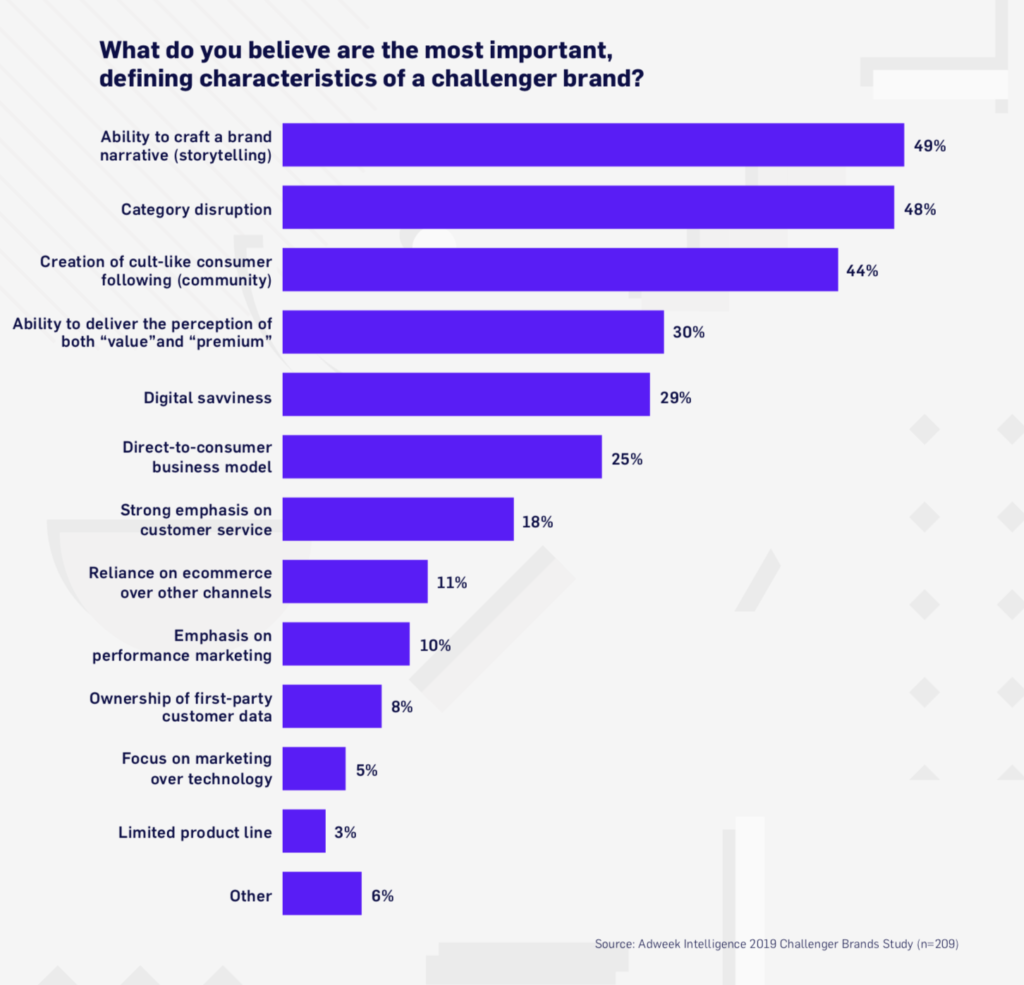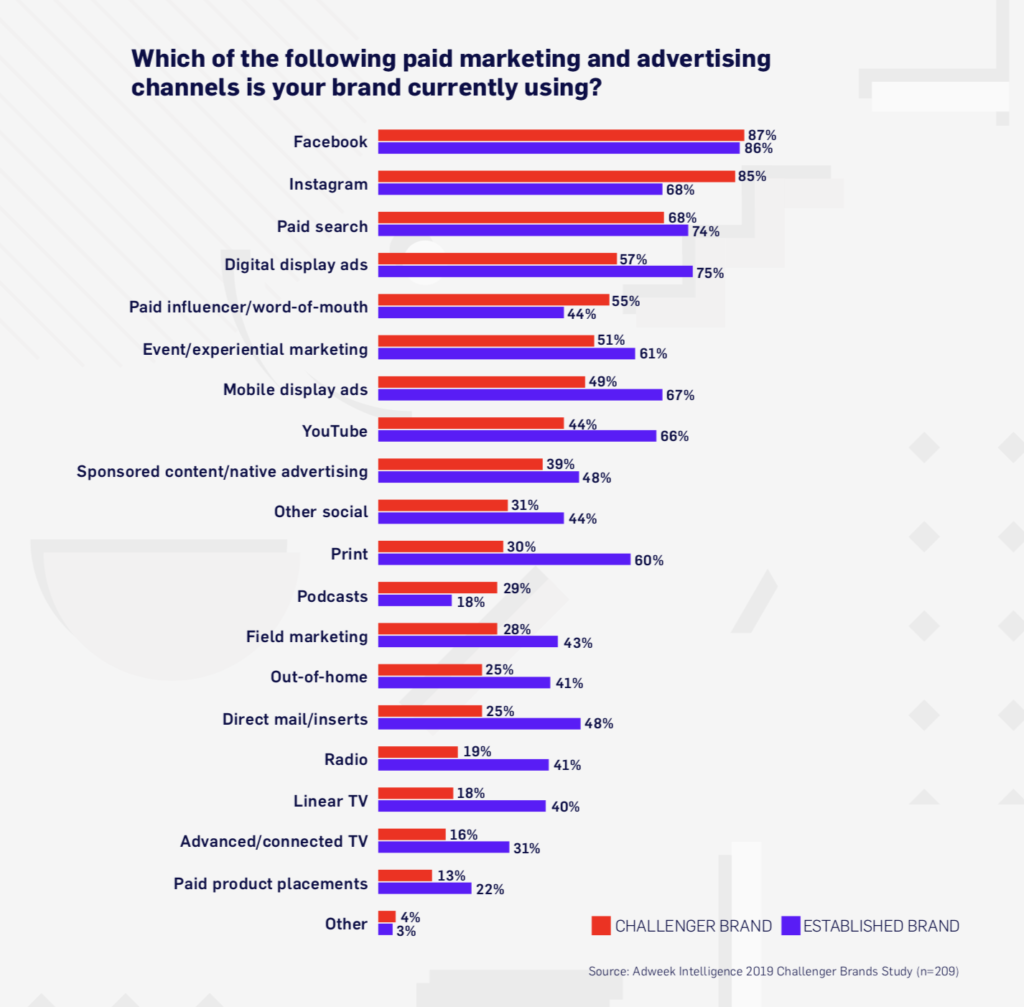Challenger brands were born in a world of transition and innovation . To these scrappy newcomers, change isn’t simply a goal, it’s a part of their DNA. Digital media has reshaped our society into one of interconnectivity, and companies like Uber, Peloton and Netflix have found enormous success by adapting to this change. Instead of clinging to tradition, challenger brands embrace the transformative power of technology and use it to shape their position in the industry. Any company hoping to stay relevant needs to pay attention to how these brands communicate, both with their customers and about themselves.
Mobile-first Approach
What exactly is a challenger brand, and what makes them different from traditional companies?
First and foremost, challenger brands are built on innovation. They work towards a vision that goes beyond conventional thinking. Consider Warby Parker, who took on the designer glasses market with new media tactics like influencer marketing and e-commerce. There’s Uber, who upended the transportation industry by giving millions of people the opportunity to be their own entrepreneurs. No matter the vertical, challenger brands find ways to disrupt the status quo.
That’s why many of today’s top challenger brands are Director-to-Consumer businesses, like Glossier, Peloton and Casper. Challengers understand that the world has shifted towards a digital, mobile-first way of life, which they embrace wholeheartedly.
Storytelling: A Challenger’s Key to Success
No matter the vertical, challenger brands put storytelling front and center. According to Adweek’s recent survey, marketers rated the ability to craft narratives as the single most important characteristic for success. Challengers are relentlessly committed to creating emotional, lasting relationships with customers, which they achieve through powerful, personal stories.

Shape Your Story with Social Media
The importance of storytelling goes hand-in-hand with the rise of social media. In an age when the average person spends 11 hours a day consuming content, how a brand presents itself on social is absolutely critical to its success. According to Adweek, established brands outspend challengers in older mediums like print and television, while challengers direct their attention towards Instagram and Facebook. As a result, traditional brands are often stuck in a game of perpetual catch-up.
The mobile revolution has allowed challengers to capitalize on powerful trends such as influencer marketing. Today, the most effective word-of-mouth campaigns take place online, and younger customers place more trust in their peers than they do traditional media.

Up to the Challenge?
Challenger brands demonstrate the need to adapt to today’s interconnected world. From Allbirds to ClassPass, these companies have turned the marketing game on its head, leveraging the power of social media to craft powerful narratives that consumers love. Challengers have clear visions of the future, and they aren’t afraid to use storytelling to bring those visions into reality.
If you’re ready to get in the ring with today’s challenger brands, we’d love to talk. You can reach out to us here!






